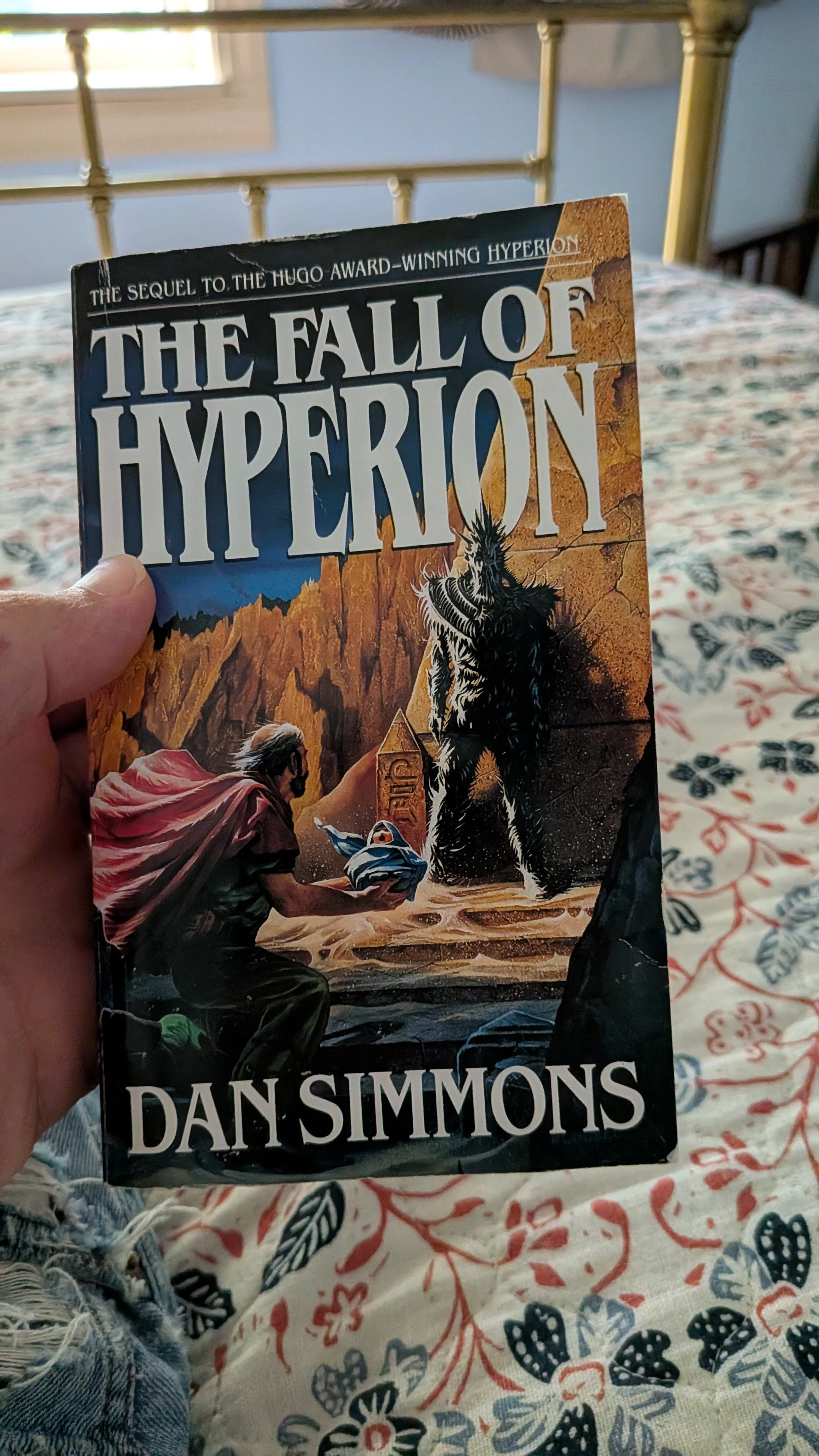THE FALL OF HYPERION - DAN SIMMONS
I wasn’t in a rush to read this other volume in the Hyperion tetralogy, despite feeling warmly about the first one. But, my brother had a copy and I decided to take it down as my last novel before I start school again and have less time to read. This one is a direct sequel to Hyperion and takes place exactly where the last one left off. While the last book had a sort of fun Canterbury Tales style structure, where pilgrims shared their stories with one another to pass the time, this one is more straightforward. It does jump between focuses and there is one POV character but it’s all basically telling the same story. To recap, the the future, there are 3 main groups, humans who live on worlds connected by teleportation portals called farcasters all of whom live under a government and system called the Hegemony of Man, sentient AIs who are known as the TechnoCore, and former humans who have chosen to live in space and have mutated, known as the Ousters. These groups are in conflict and enter into a sort of apocalyptic battle with one another, while a smaller group travels to the planet Hyperion where these strange structures known as the Time Tombs and a strange creature known as the Shrike are based. As one might guess, the Shrike and Time Tombs have a lot of relevance to the larger war. The background world-building stuff remains really good in this book. I like that there are new religions in this future world, the largest being Zen Gnosticism, which seems to be popular since it has no real requirements and no notion of sin (basically a space version of the California ideology), as well as a tree based religion called Muirism which goes on to play a big role in the story. I like that they have an affinity for the Shrike since the latter has an enormous, stainless steel “tree of pain” upon which he impales his undying victims. I like the idea that the farcasters allow for houses and streets and rivers that spans dozens of worlds, as well as differences between people based on the amount of gravity that each world has. The book does a good job paying off the premise, the twists towards the end as well as the resolution were satisfying. I’m not sure I fully understand what “moves backwards in time” means and the Shrike himself remains pretty mysterious. Additionally, it still doesn’t make sense why one of the half-robot cybrid characters was John Keats besides the fact that Keats wrote a poem called Hyperion and Simmons seems to be really into him. That part didn’t pay off for me. Overall, I’d say it pretty imaginative and fun. It reads fast and has lots of cool sections and ideas. It feels like part two and, along with Hyperion, seems to basically be one long book. I’m not sure I’ll rush out to read the other two in this series, the story seems told and over, but I’m glad a finished the two
